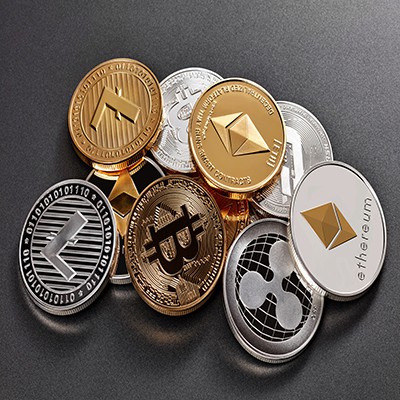There’s one secret to mass adoption for any new tech…
Accessibility.
Ten years ago, a smartphone was a luxury item—everyone “knew someone who had one.”
Today, nearly every adult (and child over 10) in the western world owns one.
They’ve become so easy to use, even my grandma uses a smartphone.
And that’s exactly what’s developing in the crypto world.
As regular readers know, one of the biggest roadblocks to cryptos gaining widespread traction has been their lack of accessibility. There are limited platforms that accept them as payment for goods and services… and using a traditional bank account for crypto purchases isn’t as easy as just swiping a card or entering a PIN at a gas pump.
But despite these setbacks, it won’t be long before even your grandmother is using cryptos to buy groceries…
Bitcoin (the crypto industry benchmark) has been around for over 10 years. But it only started gaining national media attention in 2017, when the price skyrocketed from $1,000 to $20,000.
In 2018, when it fell to less than $4,000, most wrote cryptos off as another fad, bubble, or scam.
But they were wrong. Today, bitcoin is back above $8,500…
And it won’t be long before individual adoption becomes a whole lot easier.
Last June, Jack Dorsey told The Next Web: “There really hasn’t been a prospect [for accessible digital currency] until a few years ago, when the bitcoin white paper was released.”
Dorsey is the founder of Twitter and payment processing company Square (SQ).
In February 2018, Square started offering the ability to buy and sell bitcoin through its popular Square Cash app. (That same month, we recommended the company to Curzio Research Advisory readers, and we’re now up double digits on the stock.)
And just this month, Square won a U.S. patent for a network that enables real-time crypto-to-fiat transactions in nearly any global currency… a major hurdle on the path to mainstream retail use, understanding, and acceptance of cryptos.
As Dorsey explained in the interview, Square’s crypto team is focusing heavily on education and usability:
The one word that sums up everything we’ve been trying to do at Square is “access.” And I don’t think there’s a greater technology out there that enables the kind of access we need at the individual level—that is borderless, that is not controlled by any one particular company, and that was born on the Internet, and continues to be developed on the Internet—than [cryptocurrency].
Square has a $25 billion-plus market cap and its customers include small and large businesses across the U.S.
With Square focused on improving understanding, accessibility, and usability of cryptos, its huge customer base (almost every merchant you buy from) will soon be turning its attention to cryptos as well… and thanks in part to Square’s new patent, this reach will extend well beyond the U.S.
For any new market or product, widespread user adoption generally follows a simple series of events:
- You hear about it
- Someone you know tries it
- You try it yourself
If you’ve been following us for a while, you know cryptocurrencies are already on this path…
A 2019 survey by venture capital firm Blockchain Capital revealed that while only about 11% of Americans own bitcoin… awareness of bitcoin had risen from 77% in October 2017 to 89%. This increasing awareness is how crypto accessibility becomes widespread adoption.
Cryptos are no longer a niche market. They’re gaining traction… quickly. As ease of use and accessibility become the norm, this asset class will become as integral to everyday life as the smartphone.
And if you’re still not convinced, keep your eye on Square and Jack Dorsey… with a former Google engineer heading up Dorsey’s Square crypto team, a U.S. patent win is only the beginning.
P.S. Square is up nearly 30% for Curzio Research Advisory members. And it’s just one of more than a dozen stocks already up 10% or more. To learn about opportunities like Square before the big moves, become a Curzio Research Advisory member today… you can try it out for an incredible $4.95.




















